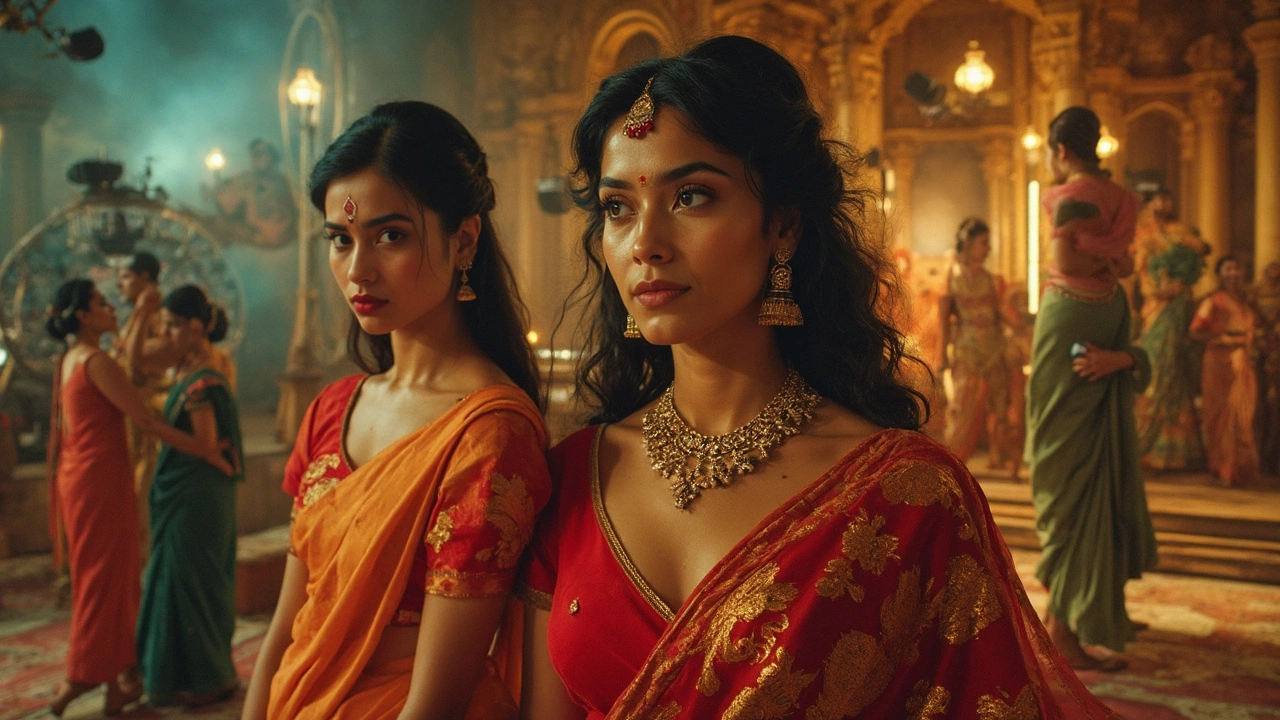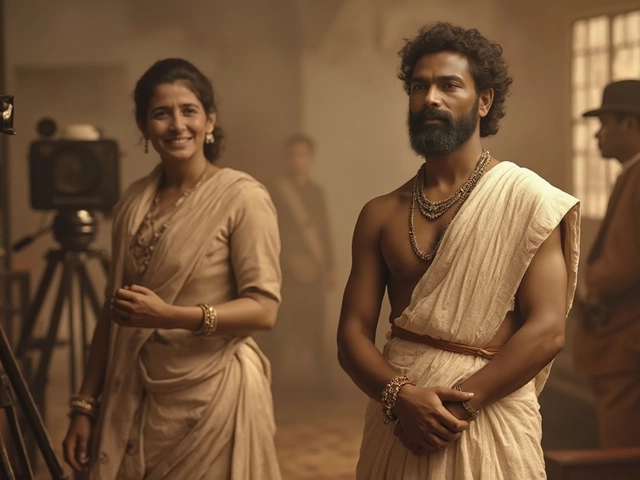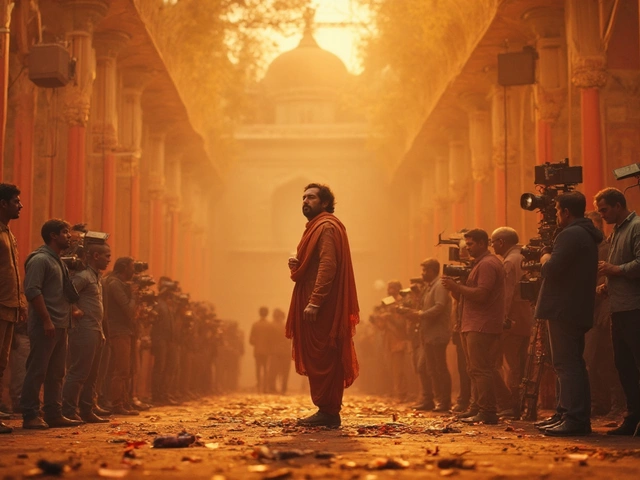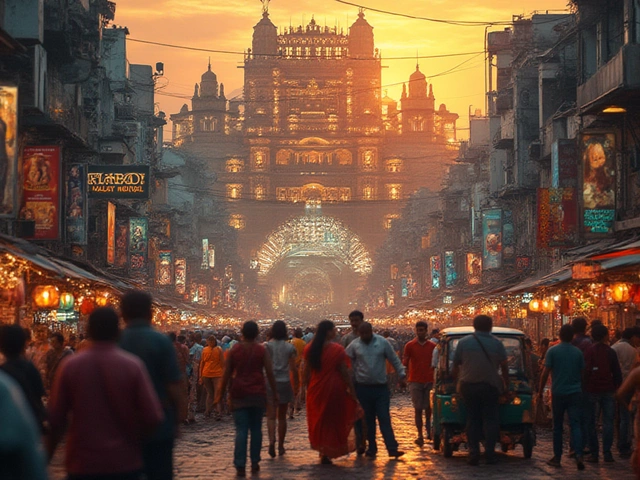
Trying to pick the greatest actress in India? That’s like walking into a sweet shop and being told to pick just one treat. Classic Indian films have given us some real powerhouses—people who set records, changed what women could do on screen, and made us forget where we were for two hours straight.
But what really puts someone at the top? Is it box office numbers, versatility, groundbreaking roles, or just a vibe that no one else could pull off? Some believe it’s about those unforgettable performances that still feel fresh even 50 years later. Others say it’s about kicking open doors for the next generation.
So, if you’re curious about who ran the show in the golden era or just want to catch up on legendary Indian cinema, you’re in the right place. This isn’t just trivia for film buffs—it’s about figuring out why these women matter, and how you can still watch their best work today.
- Defining What Makes an Actress 'Great'
- Golden Era Icons: The Untouchables
- How They Changed Indian Cinema Forever
- Tips to Experience Classic Performances
Defining What Makes an Actress 'Great'
Everyone throws around the phrase “greatest actress” but what does it actually take to deserve that title in classic Indian films? It’s not just about picking the biggest household name. In the world of classic Indian films, greatness is a mix of acting chops, guts to take risks, a real impact on viewers, and how much they moved the industry forward. Let's break that down.
- Versatility: A top actress has to handle everything—from dramatic monologues to comic timing, from romance to tragedy. Just look at Nargis in “Mother India” and then in “Shree 420”—totally different shades, both nailed.
- Influence: Are people still copying her style and talking about her performances even decades later? If today’s stars say she’s their role model, you know she made serious waves.
- Breaking Barriers: Did she step into roles or genres that were off-limits for women at the time, or tackle social issues when it wasn’t cool? Think about actresses like Smita Patil or Shabana Azmi—they picked films that changed what Indian heroines could do.
- Box Office & Awards: Sure, trophies and ticket sales count. Icons like Madhubala and Nutan cleaned up at the Filmfare Awards and pulled big crowds to theaters. For example, Nutan bagged five Filmfare Awards for Best Actress—a record for years.
- Longevity: Did she rule for just a couple of years, or was she in demand for decades, adapting with the times? True legends stick around, shifting gears but never losing relevance.
If you look at some numbers, you’ll see the kind of reach these actresses had:
| Actress | Years Active | Filmfare Best Actress Awards |
|---|---|---|
| Nutan | 1950-1991 | 5 |
| Meena Kumari | 1946-1972 | 4 |
| Shabana Azmi | 1974-present | 5 |
| Madhubala | 1942-1969 | 0 (nominated multiple times) |
The magic recipe for the greatest actress India ever saw is clearly more than just fame. It’s about leaving a mark that shapes the industry, challenges norms, and makes audiences believe every role. These benchmarks help us pick out real legends from just popular faces.
Golden Era Icons: The Untouchables
If you ask any cinema lover about the greatest actress India has ever seen, chances are their mind jumps straight to the golden age of classic Indian films. Picture this: It’s the 1950s, 60s, and even the early 70s. Tickets sold out for movies starring just a few names that people still talk about with respect—Meena Kumari, Nargis, Nutan, Waheeda Rehman, and Madhubala. Each brought something you couldn't fake: raw talent, screen presence, and a real change in how women were seen on screen.
Meena Kumari wasn’t called the ‘Tragedy Queen’ for nothing. Watch her in “Pakeezah” or “Sahib Bibi Aur Ghulam”—she played pain and dignity in a way that almost made you uncomfortable with how real it felt. She reportedly completed “Pakeezah” while dealing with her own heartbreak, which just adds weight to her legacy.
Nargis made history with “Mother India” in 1957, India’s first Oscar-nominated film. She played Radha, a mother who stands up against everything for her kids. Her performance basically reset the bar for every actress who came after her. And side fact: the government actually issued a postage stamp in her memory, which tells you everything about her impact.
Then you have Nutan, who holds the record for most Filmfare Awards for Best Actress in the 20th century, right up with her role in movies like “Bandini” and “Sujata”. She could go from strong and stoic to completely vulnerable in the same scene—without making it look like acting at all.
- Waheeda Rehman: Known for her natural style, “Guide” is the movie you need to watch if you really want to see someone change their entire public image with one role. She started off as a supporting actress but quickly became a lead, setting a new standard for complexity in female characters.
- Madhubala: She wasn’t just a pretty face. “Mughal-e-Azam” made her Anarkali role one of the most iconic in Indian cinema. Even now, people replay her scenes for acting workshops.
What really set these women apart? They weren’t afraid to play difficult roles, and they took risks at a time when the industry wasn’t kind to rule-breakers. Here’s a quick look at some of their achievements:
| Actress | Signature Movie | Key Awards |
|---|---|---|
| Meena Kumari | Pakeezah | 4x Filmfare Best Actress |
| Nargis | Mother India | Padma Shri, Filmfare Best Actress |
| Nutan | Bandini | 5x Filmfare Best Actress |
| Waheeda Rehman | Guide | 2x Filmfare Best Actress |
| Madhubala | Mughal-e-Azam | Biggest box office draw, timeless legacy |
These Indian cinema legends shaped not only how films were made, but also how women were viewed in stories across the country. If you want to get into classic Indian films, tracking down these actresses’ greatest hits is the smartest way to start.

How They Changed Indian Cinema Forever
Let’s cut to the chase—when we talk about the greatest actress India has ever seen, we’re also talking about game changers. These women didn’t just collect awards; they rewrote the rules for everyone after them.
Take Nargis in "Mother India" (1957). This movie wasn’t just a hit; it was the first Indian film to get nominated for an Oscar. Nargis’s role made the mother a powerful lead, not just someone waiting by the window. This put women in the driver’s seat of a story—literally a first for classic Indian films from Bollywood's golden age.
Then you’ve got Meena Kumari, the “Tragedy Queen.” Her raw, emotional acting in "Pakeezah" and "Sahib Bibi Aur Ghulam" didn’t just tug at heartstrings—it set a whole new bar for how deep a performance could get. People still talk about her ability to show pain in silence, something that a long line of Indian cinema legends tried to copy but never fully nailed.
If you want versatility, Waheeda Rehman was the real deal. She moved from romantic to serious, from "Guide" to "Kaagaz Ke Phool," switching gears in style. She showed everyone that a leading lady could also be the most complex character in the film. Filmmakers started writing better roles for women because of actresses like her.
- Indian cinema legends like Vyjayanthimala introduced real dance in serious stories—before her, dance was more like a side show. After her, it became art.
- Hema Malini, the “Dream Girl,” made action and comedy just as open to women as romance was. She made it normal for heroines to have a punchline, not just a sari and a sad song.
Some numbers to show you how rock-solid their impact was:
| Actress | Legendary Film | Major Record or First |
|---|---|---|
| Nargis | Mother India (1957) | First Indian Oscar nomination |
| Meena Kumari | Pakeezah (1972) | Most awards for a single film role (at the time) |
| Vyjayanthimala | Madhumati (1958) | First to blend classical dance and lead role |
| Waheeda Rehman | Guide (1965) | Mainstream breakthrough for complex female lead |
What’s the take-home? These women forced the film industry to grow up. Today’s best actresses stand on their shoulders—whether it’s bagging a lead, fighting stereotypes, or pushing for more screen space. This is why anyone voting for the best Indian actresses in history always comes back to these legends.
Tips to Experience Classic Performances
If you want to see why someone is called the greatest actress India has ever seen, you have to watch their actual work—there’s no shortcut. With the world shifting everything online, it’s gotten easier. No dusty DVDs or praying a local theater does a retro screening. Here’s how you can get started:
- Look for Restored Classics on Streaming Platforms: Services like Netflix, Amazon Prime, and even YouTube have a bunch of classic Indian films. Try searching for legendary names like Nargis in ‘Mother India’, Meena Kumari in ‘Pakeezah’, or Nutan in ‘Sujata’—they’ll give you the real feel of old-school acting talent.
- Try Theatrical Reruns or Film Festivals: Major cities often have film weeks celebrating classic Indian films. For example, Mumbai’s Film Festival usually screens restored versions of famous movies. It’s a whole different vibe watching them on a big screen with an audience who actually cares about film history.
- Follow Specialty YouTube Channels: There are channels that upload great interviews, behind-the-scenes stories, and rare performances from the Bollywood history vaults. Even clips from award ceremonies show off their off-screen impact.
- Read Biographies or Watch Documentaries: If you get curious about someone’s journey, there are solid documentaries about icons like Smita Patil and Shabana Azmi. Reading ‘Meena Kumari: The Classic Biography’ or watching ‘The Inner and Outer World of Shahrukh Khan’ (which also talks about his co-stars) can give real insight about how demanding and unpredictable this world was for women back then.
- Create Your Own Watchlist by Decade: Try picking one movie from each decade starting from the 1950s up to the 80s for a crash course. It’ll show you how acting styles and roles changed—and why big names became legends.
If you like numbers, here’s a quick look at the most-watched classic films on Indian TV during last year's festival reruns:
| Film Name | Lead Actress | Viewers (millions) |
|---|---|---|
| Mother India | Nargis | 8.2 |
| Pakeezah | Meena Kumari | 6.7 |
| Sujata | Nutan | 5.5 |
Most importantly, watch these movies like you would any new release—no skipping or multitasking. Focus on the little expressions, the dialogue delivery, and what these actresses do when the camera’s not directly on them. That's where the magic really is.




Write a comment